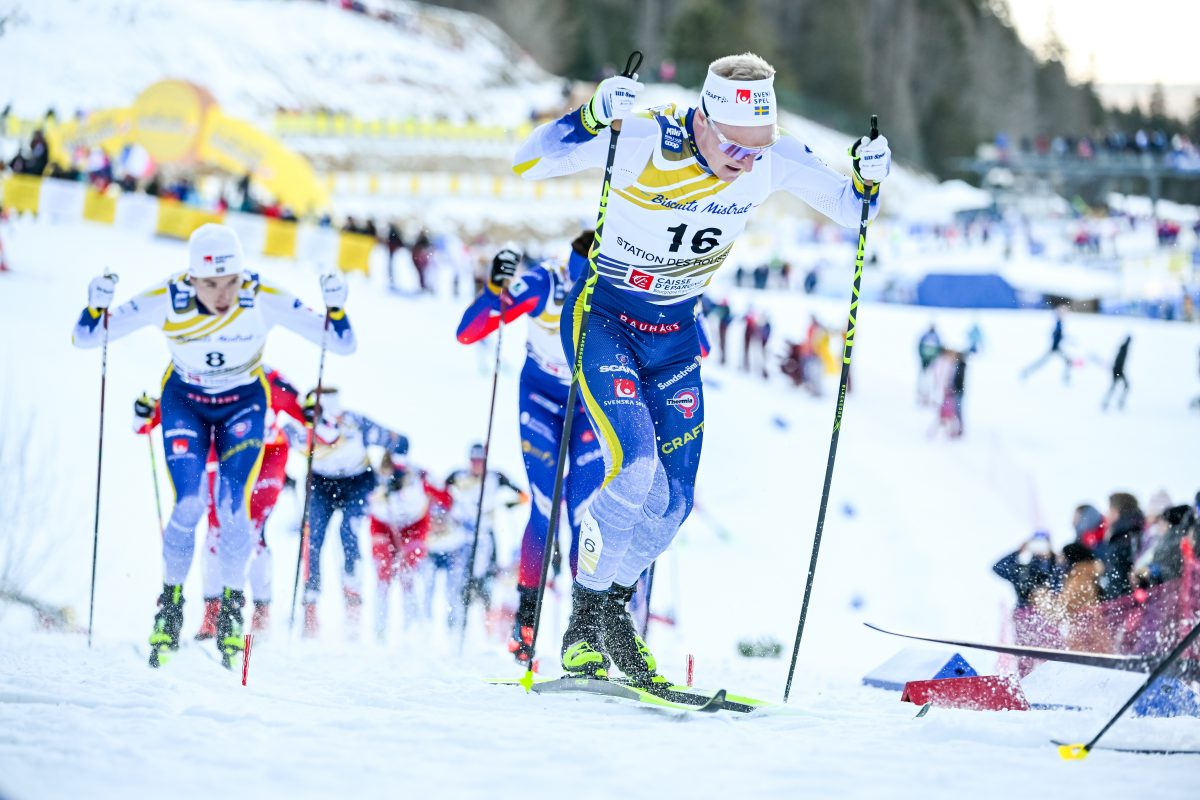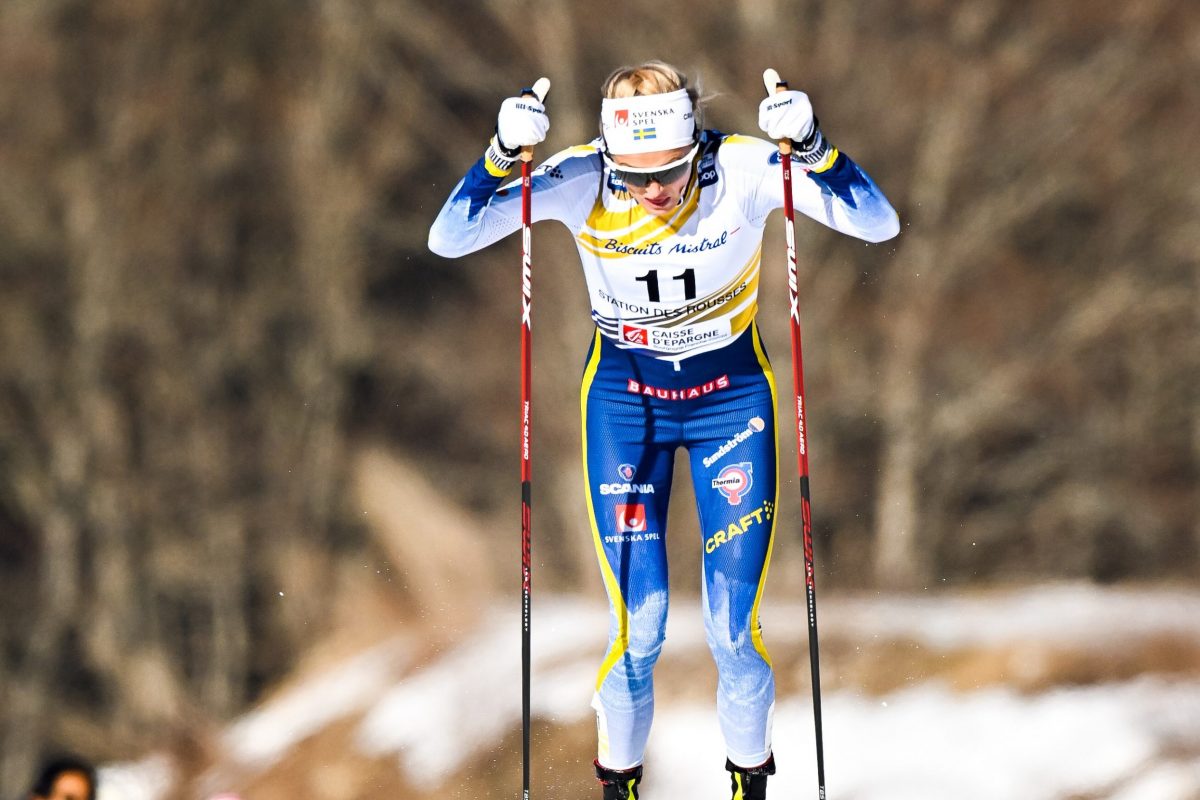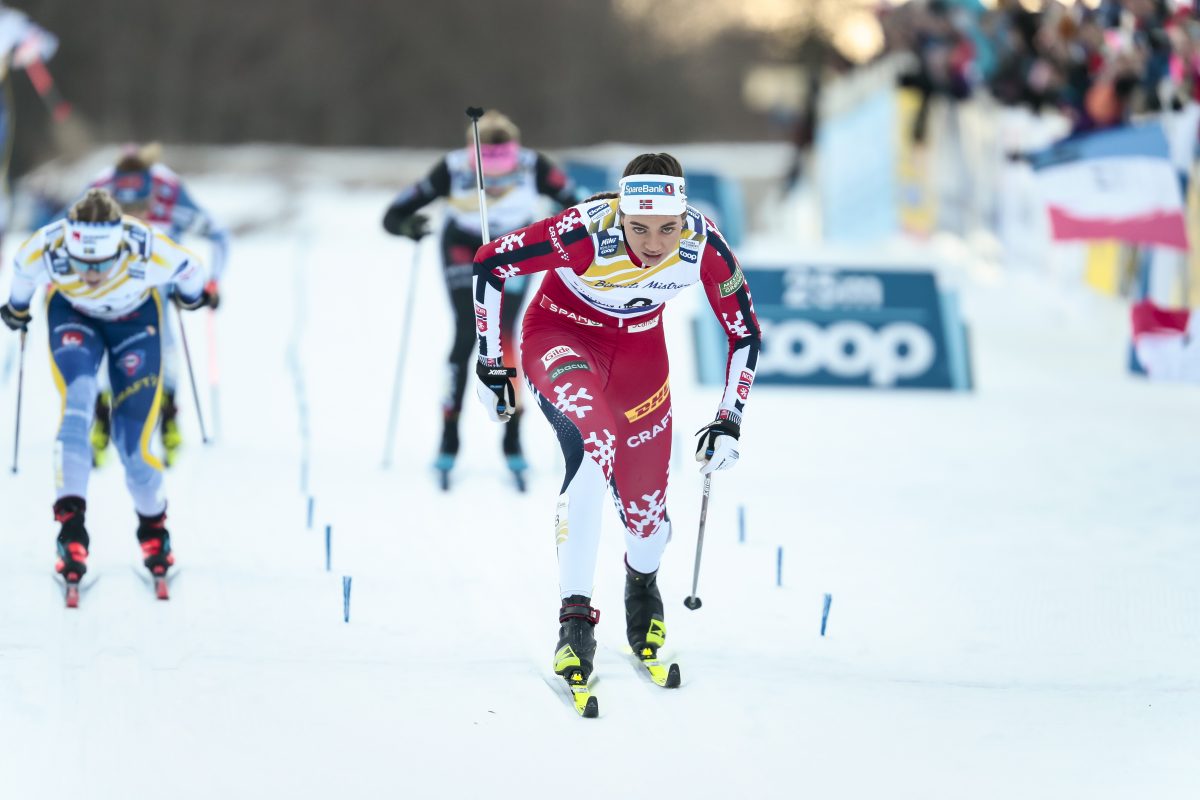
When Cliff Field met his parents for dinner in Steamboat Springs, Colo., last weekend, the family of three knew the discussion wouldn’t be easy.
A few days earlier, Field had stumbled on his mother’s quotes in a Steamboat Today article about his nordic-combined National Training Group. The focus was the team’s financial status following the budget cuts handed down by the United States Ski and Snowboard Association (USSA) this year. The underlying reality was that Field’s future in the sport was at stake.
“I think it was when he read the article online and saw my comment about us being $60,000 in debt,” said his mother, Susana Field. “And he said, ‘Well, what am I doing in this sport? Why haven’t you told me? I can just quit the sport right now.’ ”
Susana said she broke down crying at the table. She explained to her 19-year-old son that they wanted to make it work, but could no longer afford to do so.

Since Field started competing internationally the summer before ninth grade, Susana and her husband, John, had spent some $35,000 a year on keeping him in the sport. They not only exhausted their savings, they maxed out their credit lines.
Speaking on the phone from her new home in Rangely, Colo. — about 2 ½ hours from Steamboat Springs — Susana said she was humiliated and embarrassed, but knew the importance of her family’s story. If they were struggling, other athletes’ families must be as well.
Back in 2006, Susana and John Field left their custom-cabinet business for other careers; Susana became a real-estate agent and John went to school in Rangely. Meanwhile, Susana battled breast cancer, and as the medical bills piled up, her son went higher in the sport — winning multiple junior-national titles.
She stayed in Steamboat to keep Field in the Steamboat Springs Winter Sports Club, but upon his graduation from high school last spring, she relocated. He stayed alone in the family’s former home — a rental unit Susana described as a trailer — and his parents visited when they could.
Looking ahead, Susana said they might have to sell that property.
“I know there’s some locals that think, ‘Oh, these are just rich kids that are flying over to Europe,’ ” she said. “But we haven’t put our hands out before. We did take the financial burden, and we just can’t anymore.”
Without money left for college tuition, Field was considering the military.
“It definitely ups the ante as far as what I’m going to do with my life if this doesn’t work out,” he said. “If we can’t find money, I’m probably not going to be able to go on with this sport.”
But for Field, who took some college classes with teammates while in Steamboat Springs this summer, the military may not be an option because he had asthma.
“I’m kind of just taking it as this season right now,” he said. “But it’s also like this is the last time I might be able to do something cool.”
Field said he used that as motivation to keep improving and hopefully make the U.S. Ski Team (USST), with just seven men between the A- and B-teams this season.
Their Own “Drive for 25”
Without any financial support from the USSA, some of the four other members of the National Training Group (NTG) — which was essentially a development or D-team — struggled to hang on as well, Field said.
Like the B-team athletes they trained with, some found accommodating jobs in Steamboat Springs. Others, like Field, found it difficult to work regularly between year-round trips to Europe.
For most of the athletes, their parents picked up the tab.

A former national team member with a 17-year-old son on the NTG, Kerry Lynch took it upon himself to lead the fundraising efforts. In an email, Lynch wrote that given the relatively small size of nordic combined, the sport faced inherent challenges. Especially at the development level, volunteer help was critical.
“Parents, families and private funding sources cannot be the sole funding mechanism for the developing athletes,” Lynch wrote. “That is not a long term model for success.”
He explained that while those at the top of the sport received adequate funding to compete in the World Cup, those below them had to figure out how to pay for travel, equipment and club costs. Although the financial challenge of nordic combined in the U.S. was nothing new, Lynch wrote that the struggling economy made things worse.
In an effort to offset about $250,000 in annual NTG costs, especially with travel, Lynch recently met with fellow National Nordic Foundation (NNF) board members to piggyback off a fundraising idea. Not long after the USST cross-country coaches Matt Whitcomb and Pete Vordenberg innovated the “Drive for 25,” urging skiers to donate $25 to the sport on Nov. 15, the NNF was happy to create a similar donation link online for nordic combined.
A few weeks after U.S. Nordic Combined launched its own “Drive for 25,” the website showed it had raised more than $20,000 for development athletes. And that wasn’t including checks that had been mailed in, said NNF director Dave Knoop.
“This has just been the most gratifying thing,” Knoop said of both the cross-country and nordic-combined fundraisers, which were ongoing and would accept donations well after Nov. 15. “It’s not the amount. … Getting the participation or the awareness out there is equally as important as getting the donation.”
If not for outside assistance, athletes like Erik Lynch, who was still in high school, said they wouldn’t be able to afford competing with the best skiers in Europe.
“There are supportive people in the skiing community who are donating now more than ever,” Erik wrote in an email. “Because of the recent financial support, I’m years ahead of where I would have been without outside funds. I have been able to achieve my yearly goals some said were unrealistic.”
In August, Erik made his World-Cup debut at the Summer Grand Prix in Germany, where he finished 52nd.

It’s Not All Gravy
While the ultimate goal for NTG skiers was to make the national team and receive more support, the road ahead wasn’t much easier, according to NTG head coach Martin Bayer.
USST members not yet on the World-Cup level had to pay their own way in the Continental Cup, he said. That could include three B-team members this year.
“It has changed,” Bayer said. “In the past, (the nordic-combined USST) had 10 guys that were fully supported everywhere they went. Every year it’s worse.
“Even with the results, you saw what happened in Vancouver,” he added, referencing the gold and silver medals the U.S. nordic-combined team won at the 2010 Olympics. “And the budget got cut.”
Understanding the situation and working within it has been the solution, according to U.S. Nordic Combined Head Coach Dave Jarrett.
“We don’t have an alternative, good or bad,” Jarrett said. “We just ski.”
Without the option to pursue nordic combined in college, junior athletes have to hold off on education while chasing the elite ranks of their sport. Some, like Field, wait several years to be named to the national team. Because U.S. Nordic Combined tends to move athletes up in groups, the development team remains in limbo.
“Kind of our M.O. is to get the group together, put them in residency from an early age, high-school age, and move them forward,” Jarrett said. “This NNF support is what’s going to enable them to continue skiing and be a full-time athlete.”
As for the sport’s expenses, Bayer pointed out that it’s no more than some other sports at that level, such as alpine. As for its finances, Jarrett said it was no worse than it had been. Fundraising wasn’t needed to sustain the sport in the U.S., it was meant to invest in the younger generations, he said.
“There was a time when you were on the ski team and you were getting some kind of stipend to be in residency,” Jarrett said. “That went away years ago. It’s not any more dire than it has been, it’s just that in some parents’ cases, maybe it’s more dire.”
He referred to the specific case of U.S. men’s ski jumping, which operated without USSA funding, and said that was what nordic combined wanted to avoid.
“Our funding goal is to endow our sport so that if that, in fact, ever happened to nordic combined, we would be in front of it,” he said. “You never know what’s around the corner. The pie hasn’t gotten any bigger, and there’s more pieces to be divided.”
While the U.S. Nordic Combined athletes and its NTG continue to work for national recognition — most easily won by Olympic and world championship medals — they continue to support themselves. In Steamboat Springs, several future Olympians can be found bussing tables or working in warehouses. According to Bayer, Adam Loomis squeezed in shifts at an Italian restaurant, serving food from 10 a.m.- 3 p.m. between morning and evening practices.
“By the end of the day, they’re tired kids,” Bayer said.
While Field worked part time at the town’s alpine slide last summer, he also rehabbed a badly sprained ankle on his own. Ever since a $2,000-medical bill forced him to stop physical therapy this fall, Field had been self-treating with ibuprofen and resistance bands.
“It’s kind of beyond icing,” he said. “You need flexibility in your ankle to ski jump, and it doesn’t have the flexibility that I would like. Hopefully it will come back before we get into the world junior competitions.”
For now, that was his focus: one step and one season at a time.
***
To support nordic combined and cross-country athletes in the “Drive for 25,” visit the NNF website and click “get involved” under each fundraiser.
Alex Kochon
Alex Kochon (alexkochon@gmail.com) is a former FasterSkier editor and roving reporter who never really lost touch with the nordic scene. A freelance writer, editor, and outdoor-loving mom of two, she lives in northeastern New York and enjoys adventuring in the Adirondacks. She shares her passion for sports and recreation as the co-founder of "Ride On! Mountain Bike Trail Guide" and a sales and content contributor at Curated.com. When she's not skiing or chasing her kids around, Alex assists authors as a production and marketing coordinator for iPub Global Connection.



